Visiting the ‘OstBerlin‘ exhibition in the Museum Ephraim-Palais in Berlin last weekend, I was impressed by the quality and quantity of period paintings, drawings and prints of the developing East German part of the city, dating from the 1950s-80s.
So, when I stumbled across an etching of a notable West German building from the same period, and still in its original frame, in a house clearance shop, I felt compelled to buy it. The building shown is the Congress Hall, properly known as the ‘Haus Der Kulturen Der Welt‘ (The House of the World’s Cultures), or the ‘HKW’. It’s also known colloquially by Berliners as the ‘Pregnant Oyster’ due to its curving shapes. I collect etchings, and this was a good quality example to add to my collection. I was also a little surprised to see the medium of etching used at such a late date – why not a lithograph or another easier, less time-consuming form of printing?
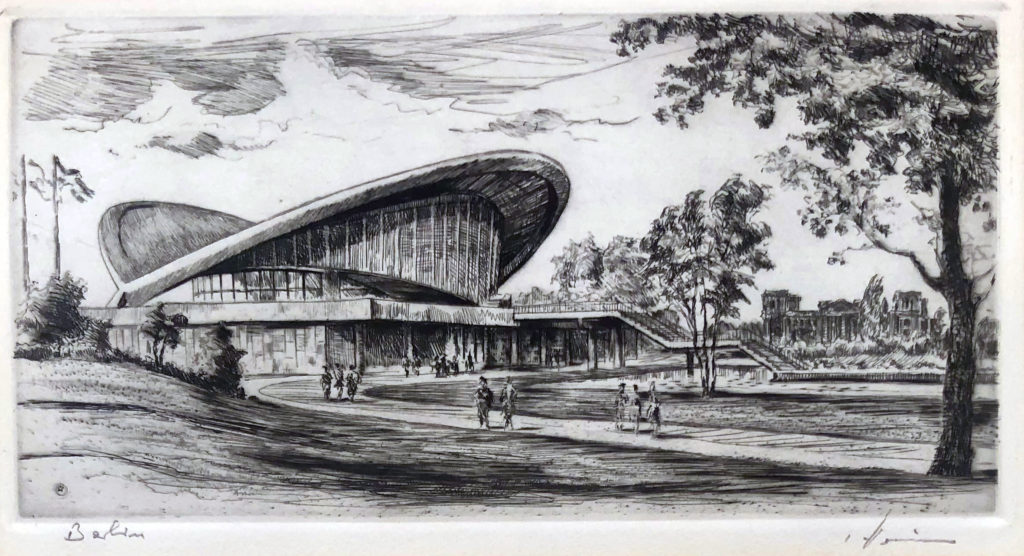
The building was designed by the successful American architect Hugh Stubbins (1912-2006) as the American contribution to the key INTERBAU building exhibition in 1957. It was built in Berlin’s Tiergarten park, not far from the Reichstag. As it was intended to be a “symbol and beacon of freedom“, it was raised up on a mound so that it could be seen from afar and from Communist-run East Berlin. The building housed, and still houses, exhibitions, performances, conferences and events of contemporary cultures, particularly from outside Europe. Thus, it spreads a message of unity, inclusion and celebration of global intellectual, artistic and cultural work and representations.
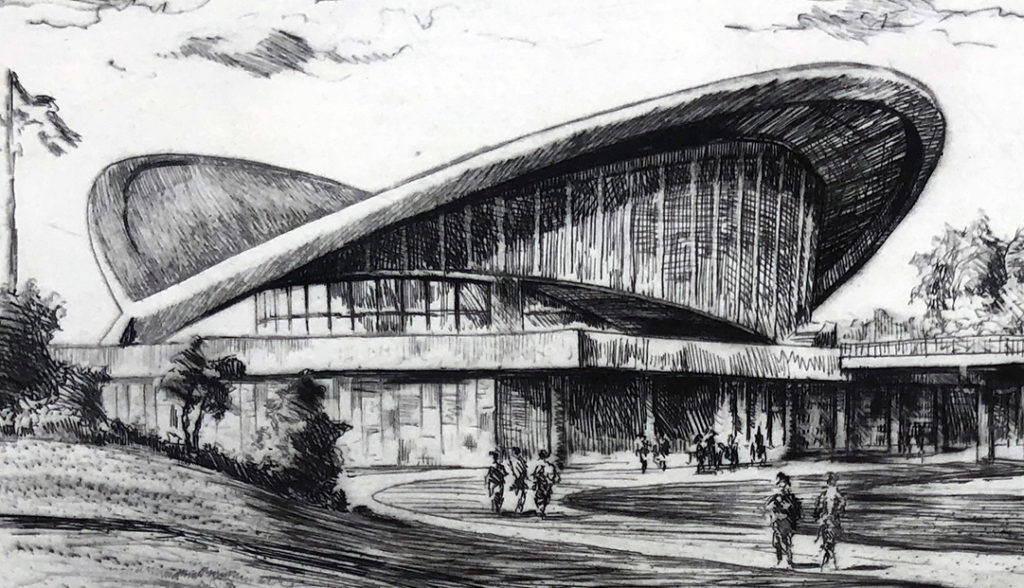
The hallmark soaring curves of the roof represented that message, and were based on mid-century modern architectural work by Eero Saarinen and Frei Otto, and Stubbins’ training under Bauhaus architect Walter Gropius following his move to the US. Construction took only one year, and the experimental roof etched itself into the landscape of Berlin and the minds of Berliners and tourists alike from 1957 until 1980, when it tragically collapsed and had to be rebuilt in time for the city’s 750th anniversary in 1987.
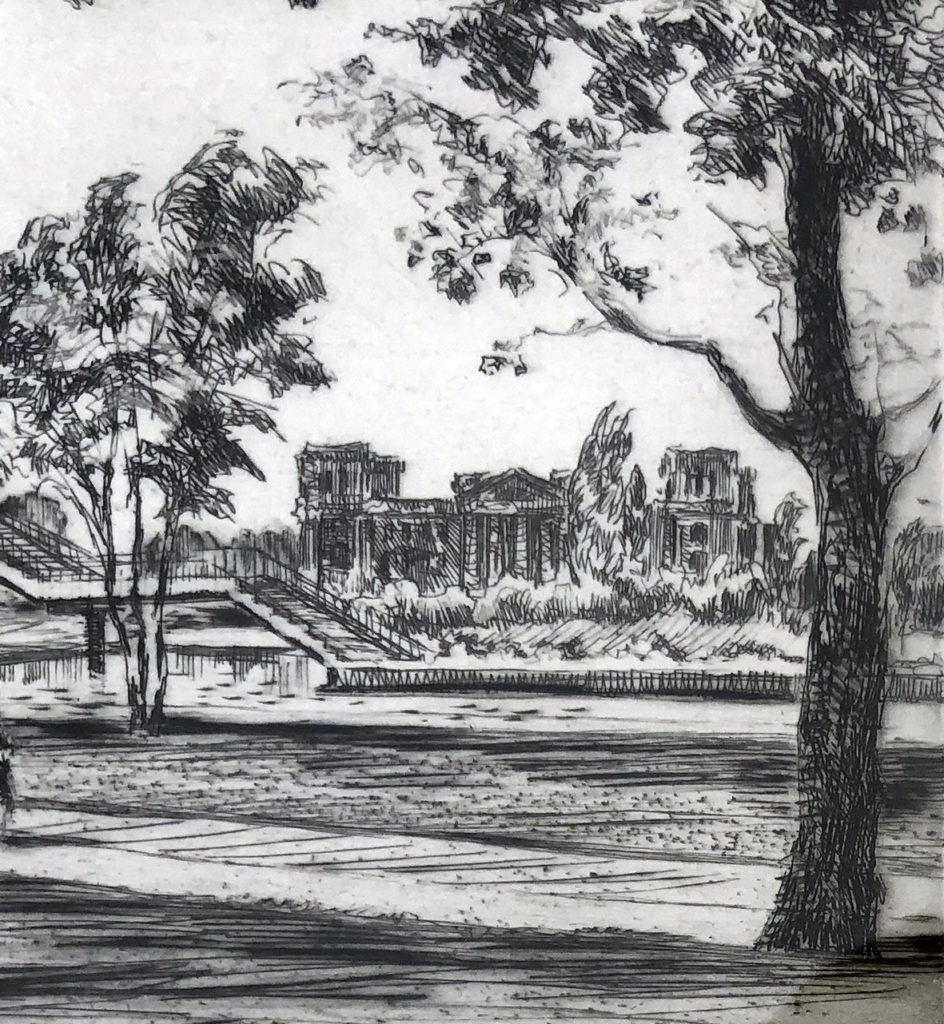
The etched detail is wonderful, from the trees and flags swaying in the breeze, to the interplay of light and shadows, and the people flocking to see the building and its cultural contents. The curves of the path and undulating hillocks echo the curves of the roof, and contrast against the angles of the stairway and the verticals under the roof.
But what I love most is how the Reichstag is portrayed. Although it is indeed close by in reality, and visible from the building, its position has been slightly moved for artistic license. Although the historic seat of the German government, and critical to the history of Germany, it is shown in the distant background, with the ornate late 19th century Baroque architecture contrasting against the sweeping mid-century modern lines. The message is clear – in this postwar world, the HKW is the future. The world of the Reichstag, devastated by fire under the NAZI regime in 1933 and only partially refurbished during the 1960s, is in the past. This is the world of tomorrow – today. And this is a world of unity and inclusion.
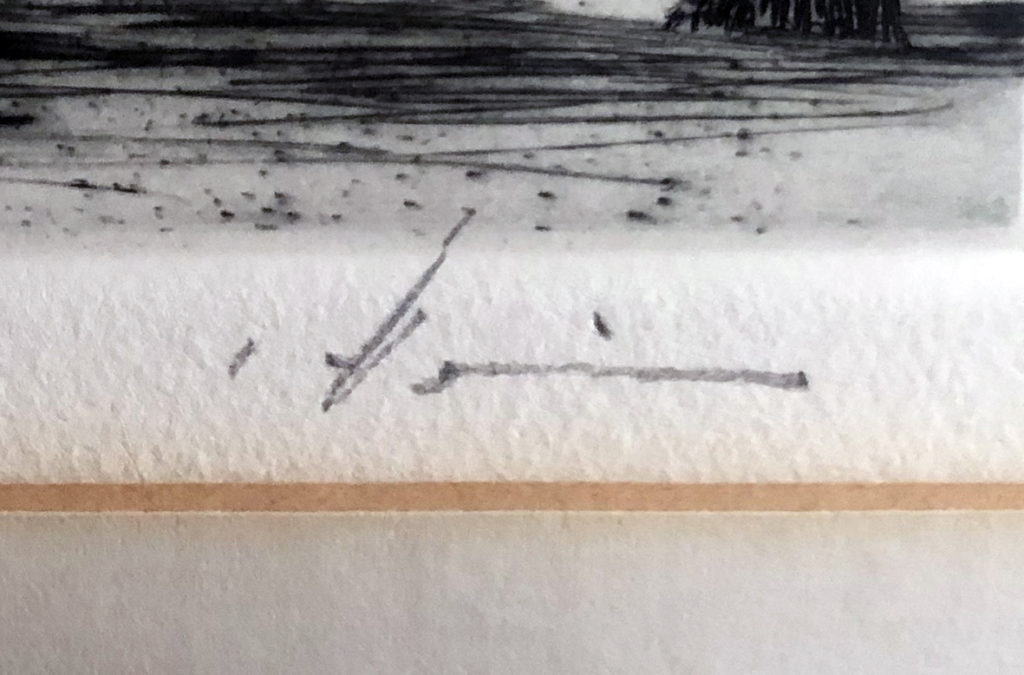
I haven’t been able to trace the artist who produced the etching, as the signature is somewhat illegible. He or she also apparently ‘signed’ the work in the etching, with a small motif of a star in a circle in the bottom left corner. There are no clues to the artist’s identity on the back, but another aspect that intrigued me about this piece was the label on the back – for Amsler & Ruthardt. As my friend and ‘Antiques Roadshow’ colleague Philip Mould often says, the back of an artwork can sometimes tell you so much about the story behind a picture.
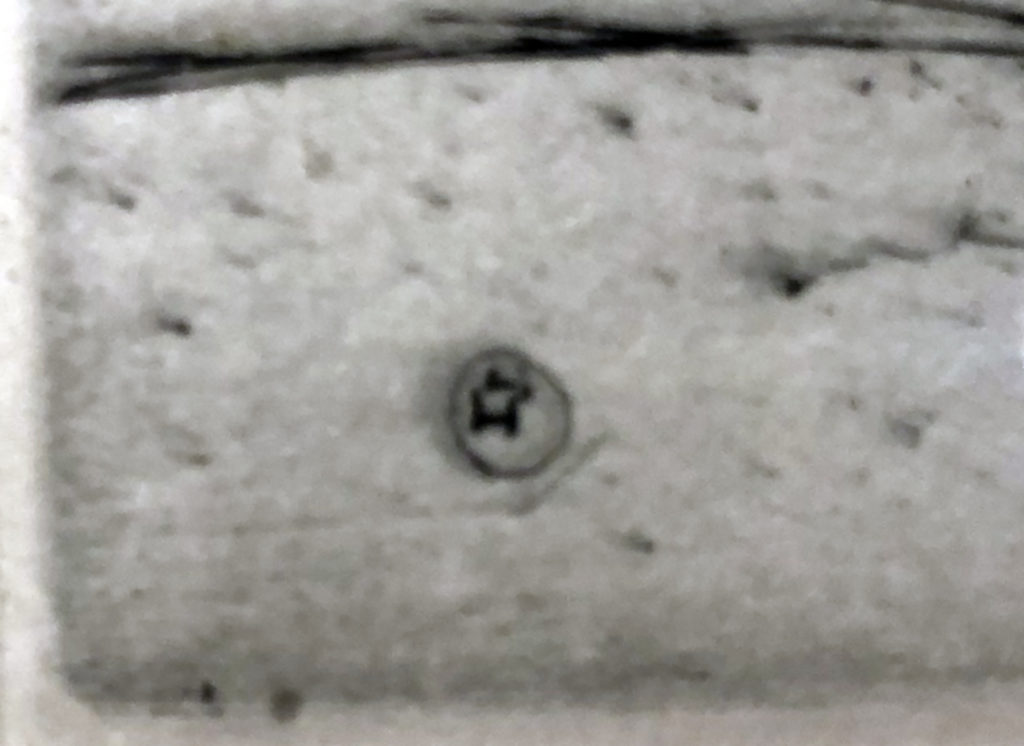
Founded in 1860 by Hermann Amsler and Theodor Ruthardt, Amsler & Ruthardt appear not to be in existence today (I visited their last known address in Berlin to no avail), but are an interesting company. During the late 19th century they were based on the prestigious Unter Den Linden, and were described as being a ‘Hofkunsthandler des Kaisers‘, the equivalent of a Royal Warrant holder to supply art to the Kaisers. Looking through the list of Court warrant holders, they were the only holder of such a right for art. Although they lost this when the Kaiser lost his throne in 1918, I doubt they fully lost their prestige and high renown. Records show that they issued 63 auction and 12 stock catalogues with over 17,000 numbered stock items, and the academic nature of these publications is noted. Sadly, there’s no inventory or stock number on this label.
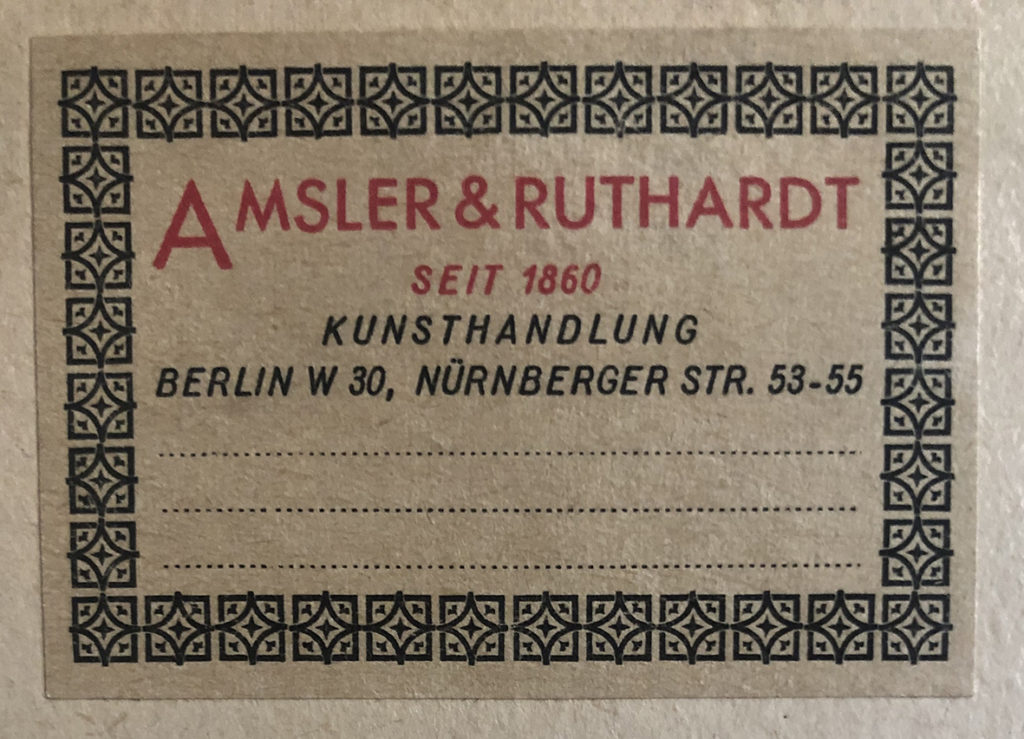
Although I’ve found a couple of other, different examples of etchings from the 1950s-70s showing this landmark building on the internet , the fact this one was handled by such an important company makes this example clearly a cut above, and about as far away from, tourist art as one could go.
Examining the label, the ‘Berlin W 30’ part of the address indicates a postal system that wasn’t used after 1962, dating this etching to somewhere around 1960. I wonder if it was part of an exhibition to commemorate new buildings in West Berlin, or even part of the INTERBAU itself? Whatever, the €20 I paid for this framed etching has opened up a fascinating story behind one of Berlin’s most iconic architectural masterpieces.
Plate size: 24cm side, 12.3cm high. Frame size: 44.5cm wide, 29.4cm high.

